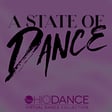
Rhythm Revival: Lynn Dally's Journey to the Global Stage
This month's guest is Lynn Dally. Lynn is a pioneering tap dancer, choreographer, and educator whose artistry helped define the modern tap renaissance. A co-founder of the groundbreaking Jazz Tap Ensemble in 1979, Dally fused the improvisational spirit of jazz with the rhythmic precision of tap, bringing the form to concert stages around the world and re-establishing tap as a serious contemporary art.
In 2001, Dally became the first tap dancer ever awarded a Guggenheim Fellowship in Choreography, affirming her trailblazing role in expanding the boundaries of rhythm dance. Her choreography celebrates musical collaboration, syncopation, and the voices of women in tap—work that includes the acclaimed documentary Gotta Move: Women in Tap and the nation’s first conference dedicated to female tap artists.
Through her performances, teaching, and global outreach, Lynn Dally has preserved tap’s lineage while propelling it forward. Her legacy continues to inspire generations of dancers who see in her career a bridge between tap’s vernacular roots and its vibrant, evolving future.
OhioDance: A State of Dance is a six-part series coming out the fourth Friday of each month through November 2025. This podcast is driven by the OhioDance mission to secure the foothold of dance in Ohio through increasing visibility, firming viability, and elevating the position of dance in Ohio.
In 2016, a five-person team set out on a mission to capture the achievements of persons and institutions who have shaped the intricate diversity of dance history and practice within the state of Ohio and weave them together in an easily accessible digital format. This we call the OhioDance Virtual Dance Collection. As of 2025 we have highlighted 44 individuals and institutions. The team has traveled over 5000 miles and interviewed hundreds of individuals in all five regions of Ohio. vdc.ohiodance.org
If you like what you are listening to and are not a member of OhioDance, you can go to ohiodance.org and click the membership button to join and receive the many benefits that come with your membership. You can also donate through our purple donate button.




